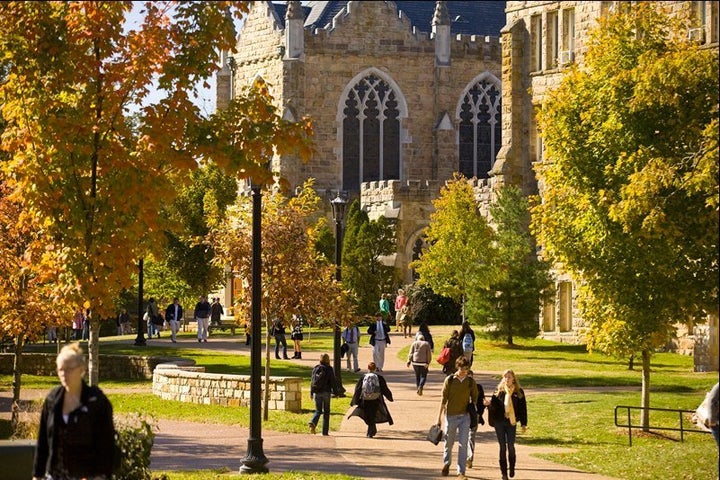
At the moment, the buzz in the higher education community is all about MOOCs -- massive open online courses. MOOCs, which in many cases are offered, for free, by top faculty at some of our nation's most prestigious universities including Harvard, MIT and Stanford, are now attracting millions of students worldwide. Individual courses may have enrollments of 20,000 or more students. Though not offered for academic credit, they have the advantage of being accessible to anyone with an Internet connection, regardless of the student's age, location, or ability to pay.
I applaud the professors who are providing MOOCs, sharing their passion for their subject matter, and exploring new learning and communications technologies. However, as the president of Albion College, a small liberal arts college, I question the long-term effectiveness of the mass approach to education that MOOCs represent. Numbers do matter -- at most liberal arts colleges, the majority of classes, by design, have fewer than 20 students. In this environment, faculty can guide students in sharing perspectives, debating ideas and making discoveries in ways that are just not possible when enrollments number in the hundreds or thousands.
Here are some of the ways that smaller really is better.
Interpreting information. Conveying information is only the first step in education. The key is to make it meaningful -- and useful -- by showing students how the information they are acquiring actually applies in a broader context. In the liberal arts setting, our faculty members help students explore the implications of what they are learning; assignments are designed to connect in-class learning with real-world situations. Most importantly, students get individual attention from their professor when they have questions about the course material or struggle with new concepts. College students today are faced with information overload; the key is to help them sort out what is important and then act on it. That's what a liberal arts education does best.
Dealing with complexity. At liberal arts institutions, courses are not simply about mastering facts, but rather they emphasize critical reading and analysis. Students refine their ideas through give-and-take with their professors and fellow students. They grapple with opinions and perspectives that differ from their own and learn to arrive at their own conclusions. Our faculty members help students understand that there may not be just one right answer but a multiplicity of options. Acquiring these more complex decision-making skills ultimately helps our students become highly valued employees.
Developing communication skills. Texting and tweeting are no substitute for strong written and verbal communication skills. In our small classes, our students learn to cogently present and defend their ideas through writing papers and essay exams, in-class discussion and public speaking -- such experiences are essential preparation for the workplace these students will encounter after graduation which puts a premium on accurate, well-crafted documentation and presentations.
Seeing possibilities. True discovery comes from faculty and students engaged in learning together. When one of our senior professors at Albion was asked what kept him excited about teaching, he replied: "My students ask questions that I have not asked yet." Small classes that foster creativity and experimentation encourage students to test ideas and find new solutions to problems. It's this mindset of inquiry and a willingness to move beyond the status quo that we as a nation most need today. That's what will yield the next generation of activists, inventors, and entrepreneurs.
A study of liberal arts college alumni published last year by the Annapolis Group provides compelling evidence of the effectiveness of a liberal arts education:
"On measure after measure -- from the quality of the learning experience to the nature of their engagement with faculty and peers, from the impact on intellectual and personal development to the value to their careers -- alumni of private liberal arts colleges... say that they benefitted dramatically personally and professionally, academically and socially, from their college experience." In particular, they credited their teachers who "challenged them and personally helped them meet those challenges."
Higher education benefits from a rich diversity of two-year and four-year public and private colleges and universities. Within the global higher education landscape, MOOCs have carved out a viable role by offering supplementary or complementary education. What MOOCs cannot offer college students are those benefits that come from being small: intense faculty-student interaction that leads to deep learning and an ability to translate critical thought into action. These are fundamental skills and insights that college graduates will need to become leaders and to address the enormous social and economic problems that face our nation and world.